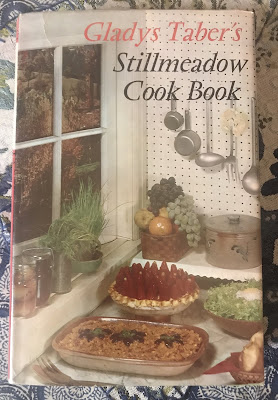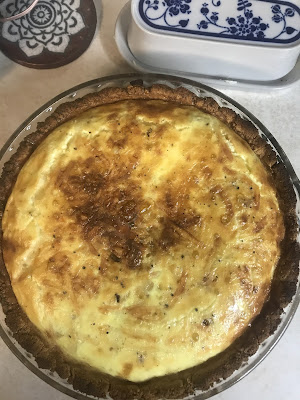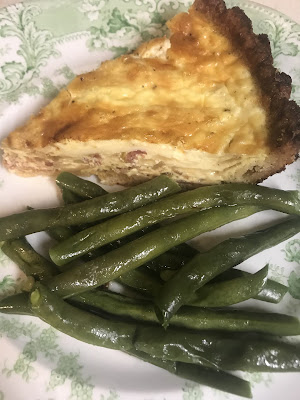Stillmeadow Cook Book
Winter winds blow against ours windows sharp with cold as nature rests quietly beneath her mantle of white. Shorter grey-veiled days lead into longer, darker nights. Trees stand at attention against the colorless horizon where few birds fly these days having taken wing months ago for warmer climes. This is a dreaming time, a time for restoring and resting. So isn't it natural that our own instincts whisper for us to curl up in our own respective nests and burrows to dream?
The dark months of winter used to herald a time for slowing down and resting, a time to spend in quiet contemplation, planning, taking stock of the past year now behind us, and dreaming. The harvest carefully preserved and safely tucked away in the pantry and root cellar would nourish you and the family through until Spring.
On my grandparents farm in upstate Massachusetts winter days were spent in the kitchen near the big stove, sitting at the long wooden table while Mom and Grandmother cooked and chatted. The snow always seemed deeper in the country and we, bundled in our snow suits, would venture out to make snowmen. Carrots from the root cellar supplied plenty of snowman noses.
The table in the wintertime always had a stack of seed catalogs blooming with inspiration and we would pour over them dreaming of next years garden. We'd snuggle in a featherbed upstairs under a mountain of quilts as Bean told us stories of her childhood on the farm and winters past while the wind howled outside. Winter always brings to my mind these childhood memories. I made a photo ornament of the old farm in winter to hang on the Christmas tree every year.
On the farm everything was preserved and canned. The root cellar shelves would have row after row of jars in every conceivable size by summers end. I used to go down there to just smell the earth and memories of vegetables. I still have my grandmothers ledgers that carefully note how many jars she "put up" each year; 75 quarts of this, 30 quarts of that, 20 jars of strawberry preserves, and so on. As her mother did so did my mother. I dream of Bean's Bread & Butter Pickles still, none since have ever tasted quite like hers.
Bean used to read cookbooks as if they were novels. In the winter she could be found sitting in her sunroom overlooking the White Mountains a mug of coffee in one hand and a stack of cook books at the other. Her sunroom in California was wall to wall bookshelves with, you guessed it, her cookbook collection. Two long walls had tall bookcases and under the windows were short bookcases that didn't obstruct the view and on top of which she displayed another collection...multi-colored glass pitchers and vases of every conceivable shape and size. It was her happy place.
I'm not venturing out much these days between the pandemic and the cold. So I too have taken to sitting with a cup of tea in one hand and stack of Mom's cookbooks close at hand. Bean, or Grandma Bean as she was affectionately known, had a lifetime love of cooking and for feeding people and on this blog I share a cookbook from that vast collection of hers, one at a time. I choose one recipe that I have never tried from its pages and then share the results and my memories of her. Love above anything else was Bean's legacy.
So with winter in mind and the fact that Bean grew up on a farm I chose The Stillwater Cookbook by Gladys Taber (1899-1980). This particular cookbook was printed in 1965, its third printing. It was first published in 1947 and then in 1958. It was published by J.B. Lippincott Company, Philadelphia and New York. Gladys was a prolific writer and the author of fifty books including; cook books, children's books, fiction, short stories, poetry, nonfiction, and plays. She was also a columnist of twenty years for the magazine Ladies Home Journal and she wrote a column which appeared in Family Circle from 1959-1967. Her writing appeared in many magazines over the years. Educated at Wellesley College and Lawrence she also spent some years teaching. She must have had a wellspring of energy because she was also a breeder of championship Cocker spaniels, had a menagerie of other animals and a full house by the sounds of it. For more on the life of Gladys Taber go to www.friendsofgladystaber.org to learn more.

Stillwater Farm was her home in Southbury, Connecticut. It was a colonial farmhouse originally built in 1690 and throughout much of her writing she shared her experiences of rural life on her beloved farm. On the back cover of this particular cookbook there is a photograph of the charming family room fireplace complete with a swinging iron crane holding pots of food cooking over the open hearth. Growing up in New England for much of my childhood this is a familiar and homely scene.
Sitting down to read her cookbook I was struck by her welcoming and down-to-earth voice inviting me, the reader, into her kitchen. Knocking on the door one imagines delicious odors issuing from within and countertops strewn with all manner of bowls, utensils and recipes in various stages of being prepared. A long narrow shelf over her counter was lined with herbs, spices and seasonings. I had to laugh out loud when I read; "Most of us dream of being the perfect hostess. This means being well organized far enough ahead of time to allow for a hot bath, a short rest, and time to put on a pretty frock and spray yourself with White Lilac. This never, never happens to me." Her sense of humor is evident throughout the cook book.
She and Bean would have had a lot in common. A house full of kids and animals, good food, kitchen chaos and a sink full of dishes, smudges of flour on cheeks and a twinkle in the eye. In other words, kitchens, homes and hearts full of love. Bean had been raised in a formal household where things were on show and not used unless company was coming. She vowed her home would always be welcoming and warm and that even precious things would be used and shared. Gladys's mindset seems to have been the same. They were both keepers of the hearth and home.
Stillwater Cookbook has chapters on the following; appetizers; soups; egg, cheese and pasta; fish and shellfish; meats; fowl; vegetables; salads; sauces and salad dressings; breads; desserts, cakes and cookies; pickles and preserves; and finally beverages. Another called 'Shelf Magic' covers emergency supplies to keep on hand, which was the result of a carload of unexpected company arriving who were all starving and she had no food left in the house! Gladys certainly would have approved of Beans well stocked pantry (and mine is no slouch either). And the last section of the book has a few pages on essential herbs, seasonings and spices to have on hand. Again, I had to laugh when I read that her favorite seasoning was in fact seasoning salt. Mom swore by it herself. A good shake used to go into just about everything. The one thing though that they didn't have in common was that Gladys used and recommended MSG or monosodium glutamate, a chemical taste enhancer. Please refrain, its not at all healthy leading to everything from learning disabilities to cancer all proven and banned throughout most of the world save for the United States. Mom was deathly allergic to it.
The recipe I chose to try was for quiche lorraine. Bean loved egg dishes from quiche, to eggy custards, deviled, stuffed, baked and frittatas. She would make mini quiche appetizers for parties in a myriad of flavors; caramelized onion and roasted red pepper; green chilis and tomato with cheddar and Mexican seasonings; feta, spinach and olives with oregano. I realized reading the recipe that I didn't believe that I had ever had the classic French combination though of bacon, onions and Swiss cheese. You can use whatever crust you wish; homemade, store bought, or even go crustless (just make sure you grease the pan well). I decided to make an almond flour pie crust since I am watching carbs these days. The nuttiness of the almonds compliments the eggs and bacon, though it is denser.
Gladys Taber's Quiche Lorraine
1 cup grated Swiss Cheese
4 eggs. slightly beaten
2 cups thin or thick cream (I used Half & Half for a lighter version)
1 pinch cayenne, 1 pinch sugar
1 teaspoon salt, pepper to taste
12 slices bacon, cooked crisp and crumbled
1 white onion, small dice
soft butter
a crust of your choice to fill one 9"-10" pie or tart pan. You can also substitute ham for the bacon. She says it freezes beautifully. Cool thoroughly, wrap well and freeze after baking.
Spread the soft butter on top of the bottom crust in the pan. Beat the eggs and cream together until combined well with a whisk. Add the seasonings and stir lightly. Meanwhile grill or bake your bacon slices, drain them, break into bits and sprinkle on the crust. Saute the diced onion in butter or olive oil until transparent. Sprinkle on top of bacon. Sprinkle on the grated Swiss Cheese.
Pour the egg mixture over all. Bake in a 450 degree oven for 12 minutes, reduce heat to 325 degrees and bake until a knife inserted in the middle comes out clean. For most ovens 25 minutes is enough. (Always watch as ovens are all different and no doubt our ovens today are probably more efficient than those she cooked on in the 1960s.)
"Serves 4, but 3 will finish it. For 6-8 persons, I make two pies." Gladys Taber.
Bean would have said, "Delish!"
She also recommends that if using a pastry crust to prick it with a fork on the bottom and chill until you make the filling. Do not pre-bake crust.
Gladys Taber's last words in this cookbook are;
"But when all's said and done, the priceless seasoning is not to be bought in any store. Better than filet of beef in aspic with truffles served in an unhappy silence, is the simplest casserole served with love and laughter."
Bean would have agreed full heartedly.
May you be able to settle in this winter and slow down, take stock and tend your own home fires.
Warm wishes.










Lovely Blog! Gladys Taber is my favorite 🤗 Is there an option to subscribe to your blog?
ReplyDelete